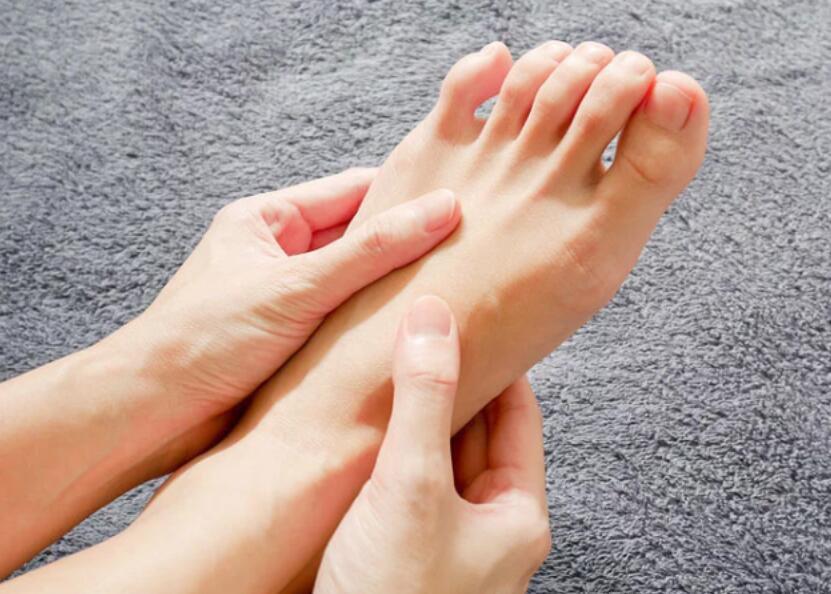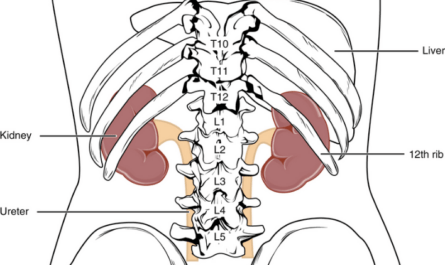Have you ever experienced the unsettling sensation of numb feet or a nagging pain in your tailbone? If so, you’re not alone. These symptoms can be caused by a variety of factors, ranging from simple postural issues to more serious underlying health conditions. In this article, we’ll explore the common causes of numb feet and tailbone pain. This can help you better understand your symptoms and when to seek medical attention.

Numb Feet: Common Causes and Symptoms
Numb feet can be described as a loss of sensation or a tingling, prickling feeling in your toes, feet, or lower legs. This numbness can be temporary or persistent, depending on the underlying cause. Let’s explore some of the most common reasons for numb feet:
1. Poor Circulation
One of the most common causes of numb feet is poor circulation. When blood flow to your feet is restricted, you may experience numbness, tingling, or a cold sensation. This can be caused by factors such as:
- Sitting or standing in one position for too long
- Wearing tight shoes or socks
- Smoking
- Diabetes
- Peripheral artery disease (PAD)
Tip: To improve circulation in your feet, try stretching, walking, or massaging your feet regularly. Wearing comfortable, well-fitting shoes and socks can also help.
2. Nerve Compression
Nerve compression occurs when pressure is applied to a nerve, causing numbness, tingling, or weakness in the affected area. In the case of numb feet, nerve compression can be caused by:
- Herniated discs in the spine
- Spinal stenosis (narrowing of the spinal canal)
- Tarsal tunnel syndrome (compression of the tibial nerve in the ankle)
- Wearing tight shoes or high heels
Tip: If you suspect nerve compression is causing your numb feet, consult with a healthcare professional for an accurate diagnosis and treatment plan.
3. Vitamin Deficiencies
Certain vitamin deficiencies can lead to numb feet, as these nutrients are essential for proper nerve function. The most common vitamin deficiencies associated with numb feet include:
- Vitamin B12 deficiency
- Vitamin B9 (folate) deficiency
- Vitamin D deficiency
Tip: To prevent vitamin deficiencies, eat a balanced diet rich in fruits, vegetables, lean proteins, and whole grains. If you suspect a deficiency, consult with your doctor about taking supplements.
4. Autoimmune Disorders
Autoimmune disorders occur when your immune system mistakenly attacks healthy cells in your body. Some autoimmune disorders that can cause numb feet include:
- Multiple sclerosis (MS)
- Lupus
- Rheumatoid arthritis
- Guillain-Barré syndrome
Tip: If you experience persistent numbness in your feet along with other symptoms like fatigue, joint pain, or muscle weakness, consult with a healthcare professional to rule out an autoimmune disorder.
5. Alcoholism
Chronic alcohol abuse can lead to a condition called alcoholic neuropathy, which causes numbness, tingling, and burning sensations in the feet. This occurs because alcohol can damage the peripheral nerves responsible for sensation in the feet.
Tip: If you struggle with alcohol addiction, seek help from a healthcare professional or support group. Reducing or eliminating alcohol consumption can help prevent further nerve damage.
6. Chemotherapy
Certain chemotherapy drugs can cause a side effect called chemotherapy-induced peripheral neuropathy (CIPN), which can lead to numbness, tingling, and pain in the feet. This occurs because these drugs can damage the peripheral nerves responsible for sensation in the feet.
Tip: If you’re undergoing chemotherapy and experience numb feet, talk to your oncologist about managing your symptoms. They may recommend medications, supplements, or other therapies to help alleviate your discomfort.
7. Hypothyroidism
Hypothyroidism is a condition in which your thyroid gland doesn’t produce enough thyroid hormone. This can lead to a variety of symptoms, including numb feet, as the thyroid hormone is essential for proper nerve function.
Tip: If you suspect hypothyroidism is causing your numb feet, consult with a healthcare professional for a thyroid function test. Treatment typically involves taking synthetic thyroid hormone to restore proper hormone levels.
Tailbone Pain: Common Causes and Symptoms
Tailbone pain, also known as coccydynia, is a dull or sharp pain felt at the base of the spine, just above the buttocks. This pain can be caused by a variety of factors, including:
1. Trauma or Injury
One of the most common causes of tailbone pain is trauma or injury to the area. This can occur due to:
- Falls, especially on the buttocks
- Childbirth
- Prolonged sitting on hard surfaces
- Repetitive strain from sports or exercise
Tip: If you experience tailbone pain after a fall or injury, apply ice to the area for 15-20 minutes several times a day to reduce pain and inflammation. If the pain persists, consult with a healthcare professional.
2. Poor Posture
Poor posture can put excessive pressure on the tailbone, leading to pain and discomfort. This can be caused by:
- Slouching or sitting in a hunched position
- Sitting for prolonged periods without proper support
- Wearing high heels, which can alter your posture
Tip: To maintain good posture, sit with your back straight, shoulders relaxed, and feet flat on the floor. Use a supportive chair or cushion to reduce pressure on your tailbone.
3. Obesity
Excess weight can put additional pressure on the tailbone, leading to pain and discomfort. This is because the extra weight can cause the pelvis to tilt forward, straining the muscles and ligaments around the tailbone.
Tip: Maintaining a healthy weight through a balanced diet and regular exercise can help reduce pressure on the tailbone and alleviate pain.
4. Pelvic Floor Disorders
Pelvic floor disorders, such as pelvic floor tension myalgia or levator ani syndrome, can cause tailbone pain. These conditions occur when the muscles of the pelvic floor become tense, weak, or damaged, leading to pain and discomfort in the tailbone area.
Tip: If you suspect a pelvic floor disorder is causing your tailbone pain, consult with a healthcare professional who specializes in pelvic health. They may recommend pelvic floor physical therapy or other treatments to help alleviate your symptoms.
5. Tumor or Infection
In rare cases, tailbone pain can be caused by a tumor or infection in the area. These conditions may be accompanied by other symptoms, such as:
- Fever
- Unexplained weight loss
- Night sweats
- Persistent pain that does not improve with self-care measures
Tip: If you experience tailbone pain along with any of these symptoms, consult with a healthcare professional promptly for an accurate diagnosis and treatment plan.
6. Sciatica
Sciatica is a condition that occurs when the sciatic nerve, which runs from the lower back down the legs, becomes compressed or irritated. This can cause pain, numbness, and tingling in the tailbone area, as well as the legs and feet.
Tip: If you suspect sciatica is causing your tailbone pain, consult with a healthcare professional for an accurate diagnosis and treatment plan. They may recommend physical therapy, medications, or other treatments to help alleviate your symptoms.
7. Pregnancy and Childbirth
During pregnancy, the growing uterus can put pressure on the tailbone, leading to pain and discomfort. Additionally, the hormonal changes that occur during pregnancy can cause the ligaments and joints in the pelvis to relax, which can further contribute to tailbone pain.
Childbirth can also cause tailbone pain, particularly if the baby’s head puts pressure on the tailbone during delivery.
Tip: If you experience tailbone pain during pregnancy or after childbirth, talk to your healthcare provider. They may recommend using a supportive cushion, practicing good posture, or engaging in gentle stretching exercises.

Exercises to Alleviate Numb Feet and Tailbone Pain
Incorporating targeted exercises into your daily routine can help alleviate the discomfort associated with numb feet and tailbone pain. These exercises focus on improving circulation and promoting overall flexibility and balance.
1. Nerve Gliding Exercises
Nerve gliding exercises help improve the mobility of the nerves in your legs, reducing numbness and promoting better sensation in your feet. To perform a simple nerve glide:
- Sit on the floor with your legs extended in front of you.
- Flex your foot, pointing your toes towards your shin.
- Slowly extend your leg, keeping your foot flexed.
- Hold for 5-10 seconds, then relax.
- Repeat 10-15 times on each leg.
2. Balance Exercises
Balance exercises help train your nervous system and improve proprioception, which can reduce numbness and improve overall foot function. Try this simple balance exercise:
- Stand near a wall or sturdy chair for support if needed.
- Lift one foot off the ground, balancing on the other foot.
- Hold this position for 10-15 seconds, then switch feet.
- Repeat 3-5 times on each foot.
- Try balancing for longer periods or closing your eyes for an added challenge as you become more comfortable.
3. Ankle Pumps
Ankle pumps promote circulation in your feet and lower legs, helping to reduce numbness and improve overall foot health. To perform ankle pumps:
- Sit in a comfortable position with your feet flat on the floor.
- Slowly lift your heels off the ground, keeping your toes on the floor.
- Hold for 2-3 seconds, then lower your heels back down.
- Repeat 15-20 times.
4. Towel Scrunches
Towel scrunches help strengthen the intrinsic muscles in your feet, which can improve circulation and reduce numbness. To perform towel scrunches:
- Sit in a chair with a small towel placed on the floor in front of you.
- Place your foot on the towel, with your heel at one end.
- Using your toes, scrunch the towel towards your heel.
- Repeat 10-15 times on each foot.
5. Child’s Pose
A child’s pose is a gentle resting pose that stretches the spine and relieves pressure on the tailbone. To perform the child’s pose:
- Start on your hands and knees, with your knees hip-width apart.
- Slowly lower your hips back towards your heels, extending your arms in front of you.
- Rest your forehead on the floor, and breathe deeply.
- Hold this position for 30 seconds to 1 minute, then slowly return to the starting position.
6. Sunbird Pose
Sunbird pose strengthens the back muscles while stabilizing the spine and tailbone. To perform the sunbird pose:
- Start on your hands and knees, with your wrists under your shoulders and your knees under your hips.
- Extend your right arm forward and your left leg back, forming a straight line from your fingertips to your toes.
- Hold this position for 5-10 seconds, then return to the starting position.
- Repeat on the opposite side, extending your left arm and right leg.
- Perform 5-10 repetitions on each side.
7. Side Angle Pose
The side angle pose lengthens the side body while strengthening the legs and activating the entire spine. To perform the side angle pose:
- Stand with your feet wide apart, turning your right foot out 90 degrees and your left foot in slightly.
- Bend your right knee, aligning it with your right ankle.
- Place your right hand on the floor or a block inside your right foot, and extend your left arm overhead.
- Hold this position for 30 seconds to 1 minute, then repeat on the opposite side.
8. Bow Pose
Bow pose is a gentle backbend that stretches and strengthens the back and tailbone muscles. To perform bow pose:
- Lie on your stomach with your arms at your sides.
- Bend your knees, reaching back to grasp your ankles with your hands.
- Lift your chest and thighs off the floor, pulling your legs up and back.
- Hold this position for 15-30 seconds, then release and relax.
9. Bridge Pose
Bridge pose strengthens the glutes, hamstrings, and core muscles that support the tailbone. To perform bridge pose:
- Lie on your back with your knees bent and your feet flat on the floor, hip-width apart.
- Press your feet into the floor, lifting your hips off the ground.
- Clasp your hands together beneath your lower back, pressing your arms into the floor.
- Hold this position for 30 seconds to 1 minute, then slowly lower your hips back to the floor.
Incorporating these exercises into your daily routine can help alleviate the discomfort associated with numb feet and tailbone pain.
When to See a Doctor?
It’s important to see a healthcare provider if numbness in the feet or tailbone pain is severe, comes on suddenly, or persists for more than a few days. Other red-flag symptoms that warrant medical attention include:
- Weakness or loss of sensation that impairs walking
- Numbness that spreads up the legs
- Tailbone pain due to a fall or other trauma
- Severe pain that disrupts sleep or daily activities
- Fever or signs of infection
- Unexplained weight loss
- Bladder or bowel dysfunction






